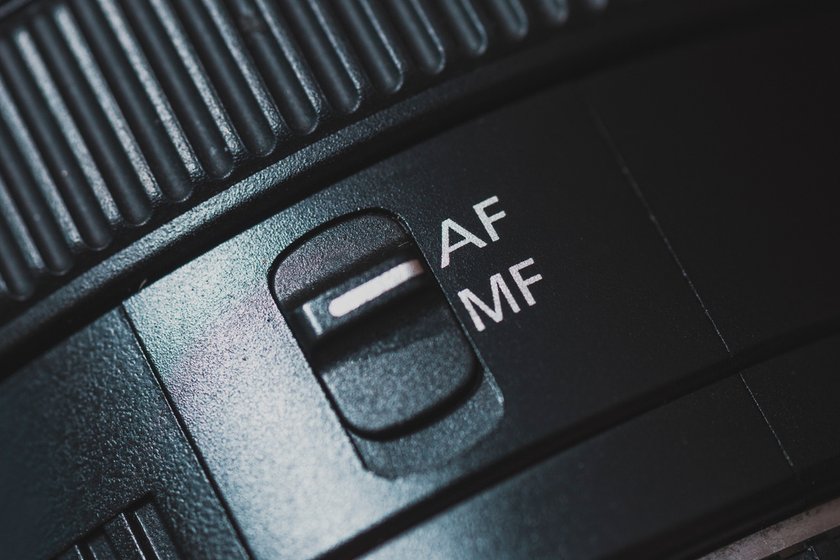So, you've probably heard of autofocus when using a camera or even your phone for pictures, right? But what does autofocus mean? It's pretty much a feature that helps get your photo's main subject looking sharp without you needing to tweak the lens yourself. This is super handy when you're trying to quickly capture something that won't sit still.
We're going to talk about what autofocus is, how it can make photography much easier, and some tips to help you take better photos with it. If you are new to photography or have been doing it for a while, or want to cover the basics, this article has got you covered! Let’s find out how to use autofocus to its advantage!
Autofocus Definition

Autofocus (AF) is a feature in cameras that automatically adjusts the lens to ensure the subject of the photo is clear and sharp. This technology allows the camera to quickly focus on its own, which is especially useful in fast-paced situations where manually adjusting the focus might be difficult. This makes taking clear pictures easier and faster.
The first significant breakthrough in autofocus technology came with the Konica C35 AF in 1977, which introduced passive autofocus. In the 1980s, developments accelerated, highlighted by Canon's introduction of the EOS 650 in 1987, which featured an ultrasonic motor, enhancing autofocus speed and quietness. Today, autofocus is equipped with digital enhancements like face detection and scene recognition, making it a standard feature in all types of cameras, from professional DSLRs to smartphones.
How Autofocus Works, Actually
Okay, what autofocus is - it's straightforward enough without much explanation. But how does it work? How does the camera detect what to focus on? There's no magic involved, just a few key principles that we'll explore right below:
Contrast Detection: This method works by analyzing the contrast between pixels on the camera's sensor until it finds the highest contrast, which corresponds to the sharpest focus. It's precise but can be slower and struggle in low light.
Phase Detection: This faster method compares light from different parts of the lens to quickly adjust focus. It's great for moving subjects and is commonly used in DSLRs and mirrorless cameras.
Hybrid Systems: Many modern cameras combine both methods to get the best of both worlds: speed and accuracy in various lighting conditions.
Focus Stacking in Photography: Share Secrets of Making Images Sharp
Learn more
Autofocus Modes and When to Use Them
 Picking the right autofocus mode is all about matching the mode to what you're shooting and where you're shooting it. Here's a quick rundown of the main AF modes and some straightforward advice on picking the best one for your situation!
Picking the right autofocus mode is all about matching the mode to what you're shooting and where you're shooting it. Here's a quick rundown of the main AF modes and some straightforward advice on picking the best one for your situation!
AF Mode | Description | When to Use |
Single-shot AF (AF-S) | Locks focus when you half-press the shutter. | Ideal for still subjects. Use in low-light conditions to allow the camera more time to focus accurately. |
Continuous AF (AF-C) | Continuously adjusts focus for moving subjects as you hold down the shutter button. | Best for moving subjects. Works well in well-lit environments to track fast-moving action accurately. |
Automatic AF (AF-A) | The camera switches between AF-S and AF-C depending on whether the subject is moving. | Suitable when unsure of the subject’s movements. Offers versatility in varying scenarios. |
Additional Tips for Enhancing Autofocus Performance:
Target high-contrast areas to help the camera lock focus more quickly.
Use focus points that are more sensitive to light, enhancing autofocus in challenging conditions.
Pre-focus on areas where you anticipate action to compensate for any autofocus lag.
Dive into your camera settings to adjust autofocus responsiveness or sensitivity, significantly improving performance.
How to Achieve Soft Focus Photography
Learn moreBonus Tip: Editing Your Shots with Luminar Neo
HDR photo editing becomes an essential next step after you've captured your shots using the auto-focus photography settings. Luminar Neo makes it easy by allowing you to blend multiple exposures into one HDR image. This technique enhances the dynamic range, ensuring your meticulously focused shots reflect the true vibrancy and detail of the scene as your eyes see it. It integrates smoothly into your workflow, providing a seamless transition from shooting to editing.
Then, for those moments when the depth of field is critical, like in macro or detailed landscape photography, Luminar Neo's picture stacking software offers a powerful solution. After capturing a series of images with your camera's autofocus carefully adjusted to different points, this tool takes over to merge these into a single image where every detail pops with clarity! This process not only complements the precision of autofocus but elevates it, ensuring that every aspect of your photo, from foreground to background, is perfectly sharp.
Conclusion
 In wrapping up our dive into the world of autofocus, we've covered a lot of ground, from the basics of AF camera meaning to the creative possibilities it unlocks. Autofocus isn't just a technical feature; it's your secret weapon for capturing life's moments with clarity and precision!
In wrapping up our dive into the world of autofocus, we've covered a lot of ground, from the basics of AF camera meaning to the creative possibilities it unlocks. Autofocus isn't just a technical feature; it's your secret weapon for capturing life's moments with clarity and precision!


